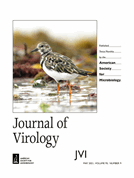Abstract Humanized mice have been used to study human immunodeficiency virus type 1 (HIV-1) transmission, pathogenesis, and treatment. The ability of pediatric thymus tissue implanted either in the leg (Leg PedThy) or under the renal capsule (Renal PedThy) with allogeneic CD34+ hematopoietic cells (HSCs) in NSG mice was evaluated for reconstitution of human immune cells and… Continue reading Use of pediatric thymus to humanize mice for HIV-1 mucosal transmission
Tag: Immunodeficiency Disorders
[Viewpoint] HIV and fungal priority pathogens
AI SummaryThe burden of invasive fungal infections among people with advanced HIV disease is a challenge. WHO prioritized four opportunistic fungal pathogens that cause invasive diseases in people with HIV: Cryptococcus neoformans, Histoplasma spp, Pneumocystis jirovecii, and Talaromyces marneffei.The burden of invasive fungal infections associated with opportunistic fungal pathogens is a persistent challenge, particularly among… Continue reading [Viewpoint] HIV and fungal priority pathogens
Mosaic HIV-1 vaccination induces anti-viral CD8+ T cell functionality in the phase 1/2a clinical trial APPROACH
The HIV epidemic 40 years on
AI SummaryIn 1981, AIDS was first recognized and by 1983, the virus causing it, HIV, was identified. Since then, there have been almost 80 million cases worldwide and more than 35 million deaths. Antiretroviral therapy has led to improved outcomes, but more global commitment is needed to control the epidemic by 2030.In 1981, acquired immunodeficiency… Continue reading The HIV epidemic 40 years on
Tryptophan-based motifs in the LLP3 region of the HIV-1 envelope glycoprotein cytoplasmic tail direct trafficking to the endosomal recycling compartment and mediate particle incorporation
Fernandez-de Céspedes MV, Hoffman HK, Carter H, Simons LM, Naing L, Ablan SD, Scheiblin DA, Hultquist JF, van Engelenburg SB, Freed EO. 2022. Rab11-FIP1C is dispensable for HIV-1 replication in primary CD4(+) T cells, but its role is cell type dependent in immortalized human T-cell lines. J Virol 96:e0087622.
Interim Analysis: Open-Label Extension Study of Leniolisib for Patients with APDS
Post-Transplant Late Complications Increase Over Time for Patients with SCID: A Primary Immune Deficiency Treatment Consortium (PIDTC) Landmark Study
Estimating the contribution of CD4 T cell subset proliferation and differentiation to HIV persistence
Abstract Persistence of HIV in people living with HIV (PWH) on suppressive antiretroviral therapy (ART) has been linked to physiological mechanisms of CD4+ T cells. Here, in the same 37 male PWH on ART we measure longitudinal kinetics of HIV DNA and cell turnover rates in five CD4 cell subsets: naïve (TN), stem-cell- (TSCM), central- (TCM), transitional-… Continue reading Estimating the contribution of CD4 T cell subset proliferation and differentiation to HIV persistence
[Editorial] Putting people first in communication about HIV
As a journal publishing content on HIV, we use language to disseminate ideas, information, and innovations. Throughout our different sections we cover a broad range of content in diverse styles: from discursive pieces in the Culture section, to the rigorous presentation of academic research in our Articles. As editors, we are acutely aware of the… Continue reading [Editorial] Putting people first in communication about HIV
Alternate Hemibody Hyperkinetic and Hypokinetic Movement Disorders Due to Strategic Lesions in Cerebral Toxoplasmosis
This case report describes a women with a background of HIV presenting with complex involuntary movements with markedly different phenomenology on the right and left side of her body.

